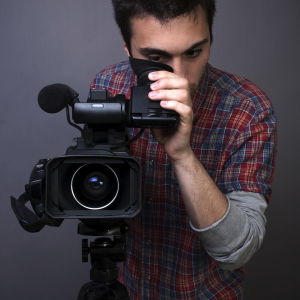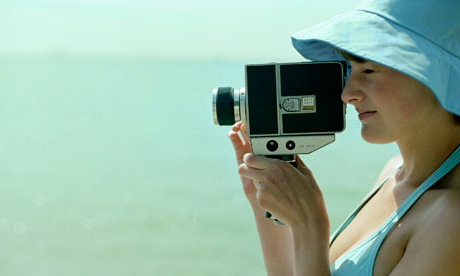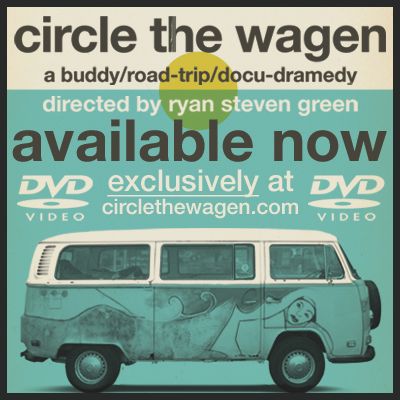The widespread use of digital cameras in concordance with YouTube’s transcendent have encouraged film making on micro and macro levels. Now more than ever you have the ability to share vacation memories from your screen to a worldwide audience. Whether you prefer to hit the record button to create multimedia scrapbooks or simply for the enjoyment of your loved ones, the tradition will only continue to rise in popularity as multimedia becomes more accessible. Although not all home and family vacation videos are the most outstanding examples of indie film making skills, you can channel the miniature filmmaker inside to produce something worth watching time and again. By harnessing a few techniques that are used by the experts themselves, your next masterpiece is as close as your camera.
 Documentary filmmaker, Roger Sherman, states that what matters most is not what kind of recorder you decide to use but rather how you use it; and with just a few tools you can achieve some amazing effects even if all you have is a camera phone from the early millennium, granted that it still works! Budget travelers can rest easy knowing they don’t have to invest hundreds of dollars in the latest, most advanced video recording device. You will also discover a profound appreciation in the resources you presently have to work with. Look at your circumstances this way: an expensive camera just makes you an unnecessary target. Without one, you will be able to focus less on toting fancy equipment and more on treasuring the precious moments of your vacation.
Documentary filmmaker, Roger Sherman, states that what matters most is not what kind of recorder you decide to use but rather how you use it; and with just a few tools you can achieve some amazing effects even if all you have is a camera phone from the early millennium, granted that it still works! Budget travelers can rest easy knowing they don’t have to invest hundreds of dollars in the latest, most advanced video recording device. You will also discover a profound appreciation in the resources you presently have to work with. Look at your circumstances this way: an expensive camera just makes you an unnecessary target. Without one, you will be able to focus less on toting fancy equipment and more on treasuring the precious moments of your vacation.
1. Steady Your Shots
No matter what device you have in your repertoire, you will definitely want the final image to be of good quality. Even HD quality images can be ruined from an unsteady shot. Set yourself up to get a steady shot, starting by holding the device firmly and hovering your finger close to the shutter button. Bend your knees, tuck your elbows in close to your body, and breathe slowly. Don’t worry about rushing the shot. If you rush, it will eventually translate into your hands; and if you have jittery hands you will have jittery images. When you’re finally ready and steady, hit the record button and proceed.
 2. Avoid Panning Back and Forth
2. Avoid Panning Back and Forth
If you observe many professional films, you will notice that their scenes consist of mostly static shots. There is hardly any camera movement at all in some scenes and, if there is, it’s often guided by a mechanism or along a track. Even if you have a tripod, panning back and forth will make the footage look stiff and unnatural. Your hands create a natural, fluid motion within the footage. This will give your video the custom, hand-crafted touch that makes it even more endearing.
If you must pan, do it slowly in the direction of the subject that you want to focus in on. Keep the camera steady as you would when setting yourself up. For instance, if you’re at the Grand Canyon you may want to get a panoramic shot to portray the majestic beauty of the site. Find a focal point. You can either start recording on that point and pan slowly away, or you can gradually turn the camera over towards it. Instead of panning from side to side, or recording continuously while you change positions, it would be better to shoot in smaller segments. Pan from one side to the other, stop recording, reframe your subject from another angle, and then resume recording. Professionals recommend juxtaposing a panning shot with a static shot as a follow up.
Roger remarks that zooming is a surefire way to ruin a film’s quality. Professional filmmakers themselves cannot achieve a steady zoom effect, not even with a preset zooming feature. Instead of zooming, you might try walking in closer to the subject and shooting from that position. If you must zoom, do a test shot first to help you determine how far you can hone in without losing the image quality.
4. Record in Short Increments
Most static shots should last 6 seconds or less depending on what you are filming. A wide view of the Grand Canyon will be more attention-grabbing. A close up on something you saw in a nearby gift shop, on the other hand, won’t be as interesting. You can gauge roughly how long your current shot should be by how long the previous shot was. Periodically go back over and review your footage to get a sense of how your footage is translating. How does it look? What does it portray stylistically?
Professional films contain variety in their shots and so should yours. This includes a balance of wide shots, panning shots in moderation, and close ups. Another good idea would be to watch some movies and television shows with the volume turned down before you jump in. You can garner a lot of inspiration from this that will help you craft your video and create more striking visual imagery.
Creating a memorable and aesthetically appealing video to frame your vacation experience will take practice. Granted, you will have even more reasons to continue travelling so that you can become more pro. You might discover in the process that film making is just as much of an adventure!
Do you have any tips and home video success (or perhaps horror) stories? What challenges do you encounter? Share in the comments below!
 About The Author: Fred Meek has over 20 years of video production experience and owns MindBOX Productions in Austin, TX.
About The Author: Fred Meek has over 20 years of video production experience and owns MindBOX Productions in Austin, TX.
Don’t forget to enter our Monthly Giveaway for a chance to win a Vintage Gillette,Moustache Wax and More! For more info visit Monthly Giveaway
[sign up in Right Sidebar]







